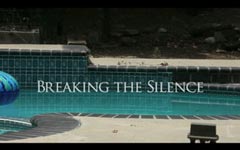I have received a lot of questions about exercise and autism since my last post. From my own experience, when I was small one of my OTs looked at me and remarked that I had low muscle tone like most people with autism. She then did nothing to work on fitness. She loved the swings, however, like most of my OTs to vestibular and propriocept me.
In school my APE teacher followed a routine I believe must have been designed for a different motor disorder than mine. The movements were too hard for me to motor plan at the time which led to frustration.
Most people don’t imagine that people like me have the potential to be fit. I know it’s possible. It takes longer than a normal motor system to improve but it can still improve. It can be hard at first, so persistence through resistance is essential. You have to be aware of real challenges like motor planning, muscle and tendon tightness and other issues common with autism that can interfere with success. For example, bilateral movements, moving arms and legs simultaneously in an exercise, and transitioning movements can be really hard for some people and frustrating until more motor control is achieved. People make a lot of adaptations to compensate for the motor difficulties. For example, if jumping sideways is hard to plan, a person might consistently turn forwards. You can build up to the skill incrementally in many ways, such as stepping sideways at first, stretching the hips and working on jumping in general. If someone can jump forward with ease but takes many seconds to jump sideways or backwards, you are likely looking at motor planning challenges which can improve with practice.
The goal is to make moving fun as well as a key to emotional balance and fitness.
Good luck!




thank you ido; that’s helpful. persistence; persistence! thankful that you are sharing your thoughts and experiences.
Exercise and making the effort to improve muscle tone, core strength, balance, and endurance is never wasted. Thanks for your comments and inspiration in this regard. We associate autism with mysterious unknown neurological problems and too often overlook the simple things we can do to build our resilience and well being. It reminds me of the story about how several big shot engineers were brought in to solve a no-start condition for the big, complex computer just purchased by a certain government office. No one could solve it until the night janitor noticed it was unplugged. Morale: don’t overlook the simple things no matter how deep the mystery that underlies our condition.
Hi Ido – thanks so much for sharing your thoughts about exercise. After I read your book, I got a personal trainer for my 22 year old son with autism. What a difference! For the first time in his life, he’s no longer walking on his toes.
Hi Ido, I am currently reading your book. WOW! I have so much praise for you, I thank you for bringing the silence of autism into the world. Your understanding of yourself will help so many people! I teach and work with autistic population. Our Yogautism class is so different from mainstream. We understand the anxiety that our students live with. And a study of our students will soon come out to show how Yogautism can reduce anxiety in the autistic population. And most of all Ido, thank you from my heart and soul for you……
Hi Ido,
My name is Valerie Holmes and I have been teaching a severe autism class for 5 years now. I heard your Podcast from All Autism Talk this morning and I had to find out more about you. So many things that you were saying have confirmed my thoughts for the past few years. Many people in my profession only listen to the “Temple Grandin” type of autism and they don’t recognize how different the severe population is . I want to help my students and their parents in anyway possible but my thoughts and ideas are so opposite of what is popular. Who helped you the most to have your story hears? Are there any teachers who stuck out to help you express your inner voice? I would really appreciate collaborating on viewpoints regarding severe autism.
I am just finishing Ido’s book “Ido in Autismland.” This was written when Ido was young and just coming out of his “prison of silence.” It is one of the most beautiful books I have read, full of insights beyond his years. It also overturns conventional thinking about pervasive autism. Douglas Biklen’s book “Autism and the Myth of the Person Alone” is another source of insight about this condition. Not only does it have chapters written by different individuals with this condition, it has a summary of results by Biklen. This book should also be required reading for anyone interested in better understanding this condition from the perspective of the people who live with it rather than the ” experts.” The book “Typed Words, Loud Voices” is a compilation of writings by people who type to speak. Many of them also have this condition.
The more people who make the effort to listen to the voice of people who live with pervasive autism the sooner their experiences will be taken into account and the limiting stereotypes of conventional wisdom can be overturned.
People like Ido are true heroes and trailblazers.
Thank you so much for sharing your story! I just discovered you today and will be up late tonight reading your blog 🙂 You are such an encouragement to me already. Gives me such hope for my sweet boy, Reid.
Thank you so much for sharing your story! I just discovered you today and will be up late tonight reading your blog 🙂 You are such an encouragement to me already. Gives me such hope for my sweet boy, Reid.